You are here
New Releases
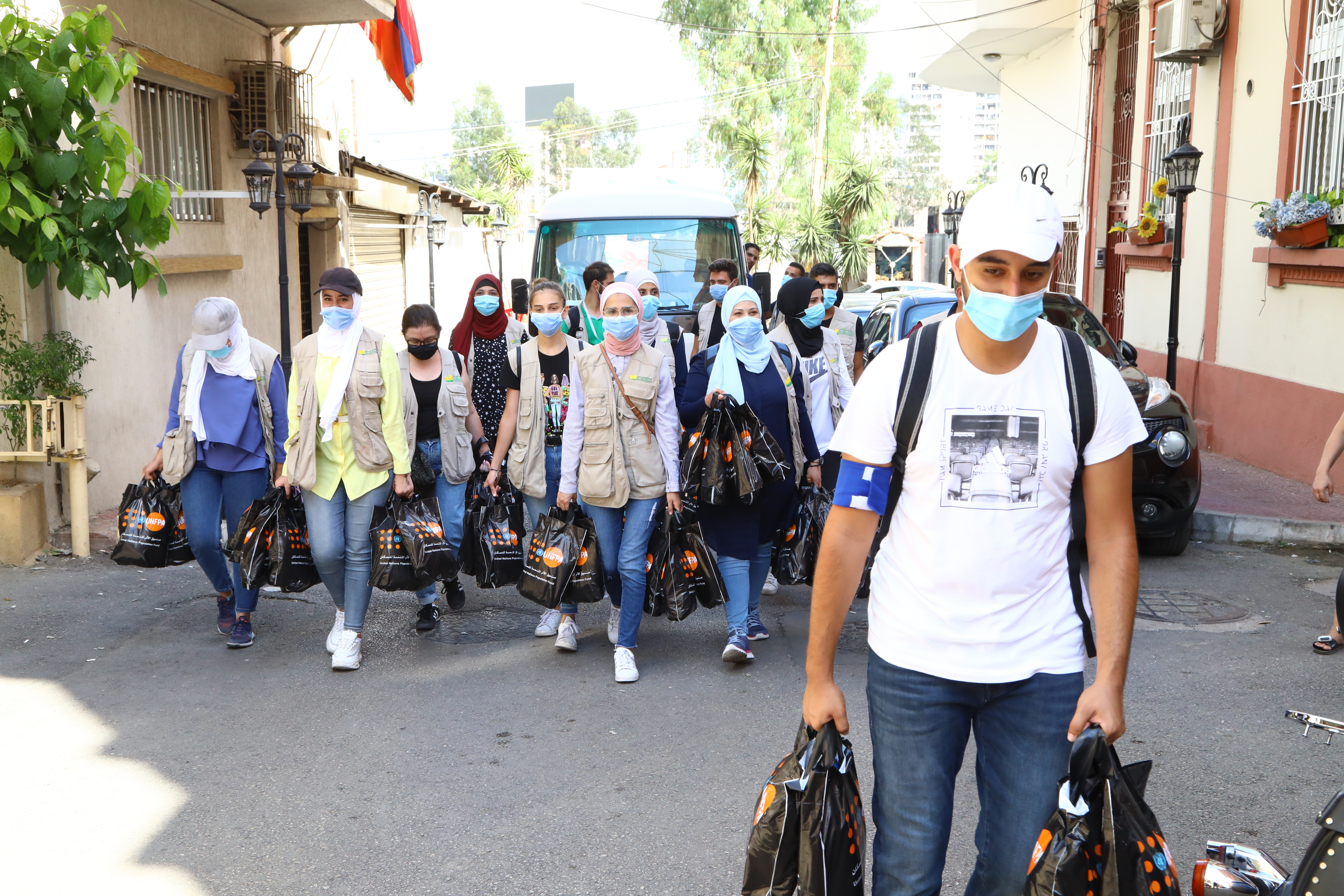
Beirut Explosion Situation Report No.1
On 4 August 2020, at approximately 18:00, a warehouse at the Beirut Port containing large quantities of ammonium nitrate exploded. The initial explosion was followed by a much more substantial blast that caused widespread damage, reportedly reaching more than 20 kilometres from the port area.
As of August 11, latest reports reveal that the death toll has reached 220 with over 7,000 injured and more than 300,000 people left displaced with many showing severe psychological distress. These numbers are continually expected to rise as more bodies are recovered from the surrounding wreckage, and dozens are still reported missing. The blasts sent shockwaves across the city causing widespread damage extending to the outskirts of Beirut, including several primary and secondary healthcare facilities. The National Primary Health Care (PHC) Network Central Drugs Warehouse was severely damaged, as well as 23 PHC Centers, 4 of which were completely destroyed in addition to 6-10 hospitals.
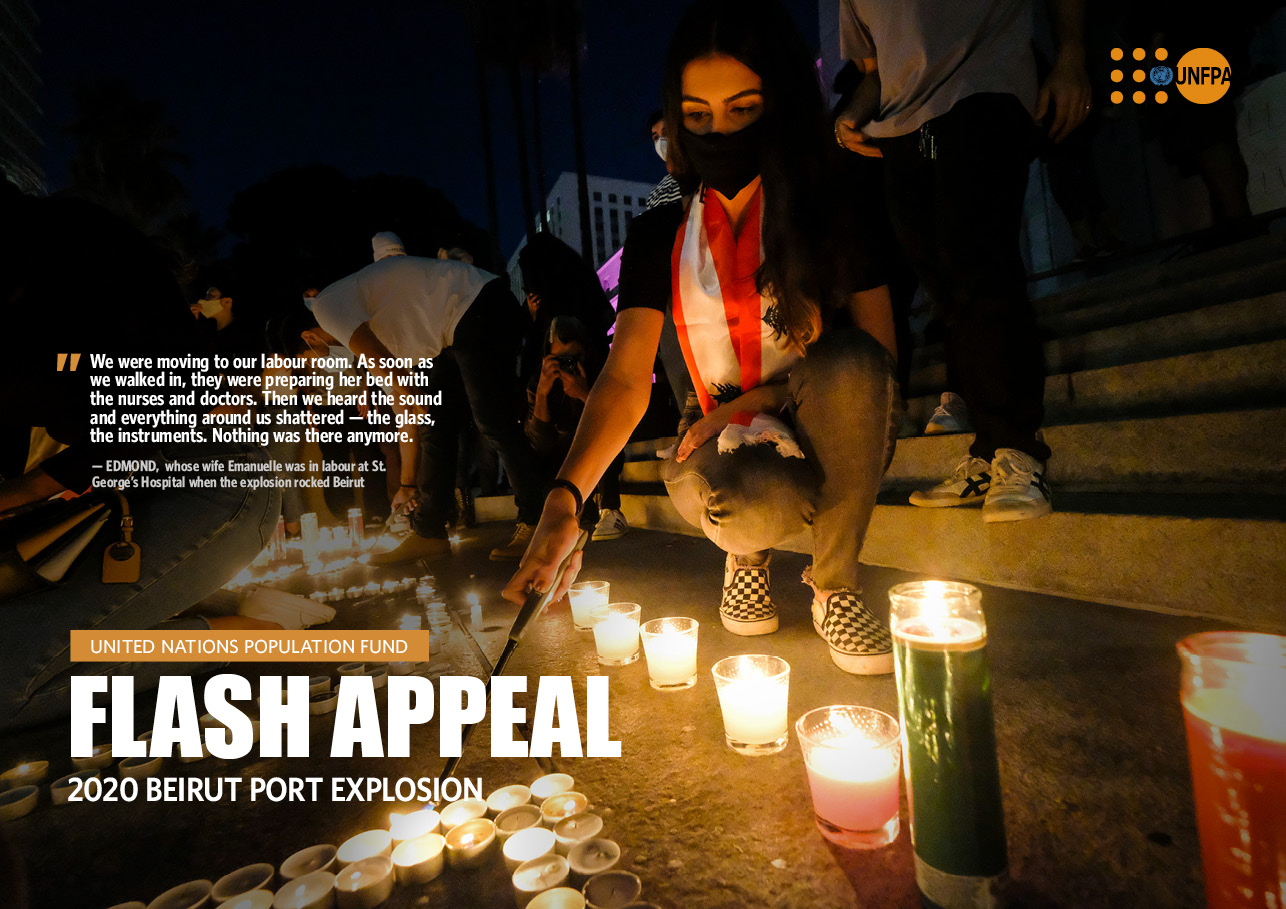
Flash Appeal: 2020 Beirut Explosion
On 4 August, 2020, at approximately 18h00 (local time), a warehouse at the Beirut Port containing large quantities of ammonium nitrate exploded. The initial explosion was followed by a much more substantial subsequent blast that caused widespread damage reportedly reaching more than 20 kilometres from the port area. As of August 11, the death toll from the incident stands at more than 170 and is continually rising as more bodies are recovered from the surrounding wreckage. More than 5,000 people were injured in the blast, with more than 300,000 displaced and dozens reported missing since the incident.
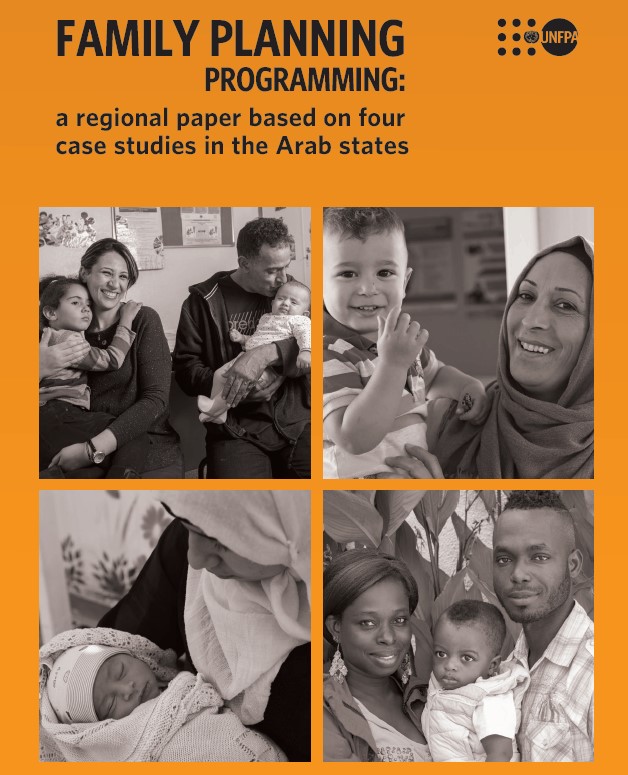
FAMILY PLANNING PROGRAMMING: a regional paper based on four case studies in the Arab states
Family planning is central to gender equality and women and girls’ empowerment, and it is a key factor in reducing poverty. The Programme of Action of the International Conference on Population and Development (ICPD) recognized “the right of men and women to be informed and to have access to safe, effective, affordable and acceptable methods of family planning of their choice.” UNFPA, the United Nations sexual and reproductive health agency, supports voluntary family planning, including procuring contraceptives, supply chain management, and training health professionals to accurately and sensitively counsel individuals about their family planning options. A holistic and sustainable approach to family planning is essential to ensure that family planning needs are met, every individual can choose their preferred method, and most importantly to reduce maternal and child mortality.
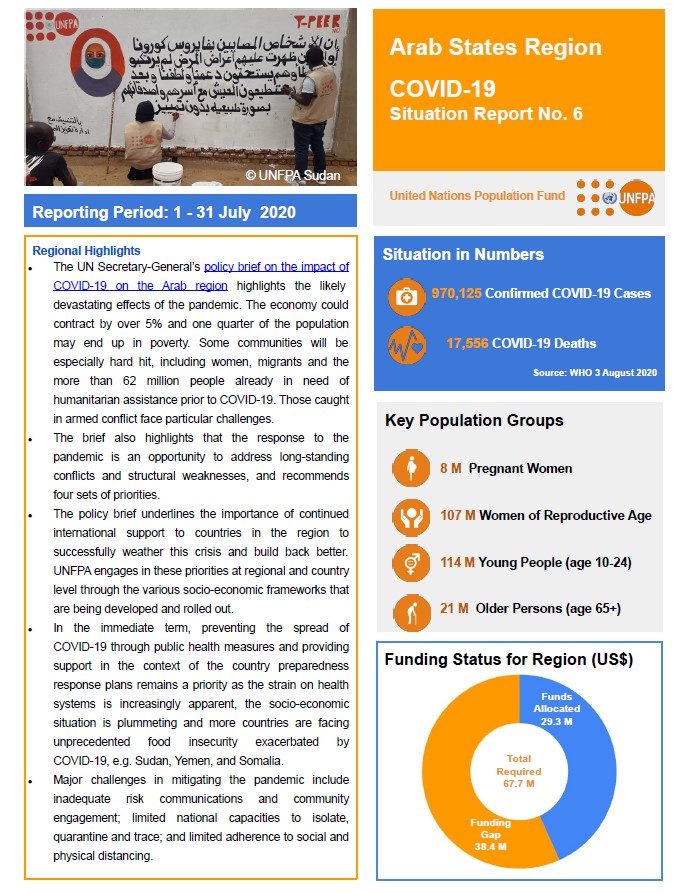
COVID-19 Situation Report No. 6 for UNFPA Arab States
The UN Secretary-General’s policy brief on the impact of COVID-19 on the Arab region highlights the likely devastating effects of the pandemic. The economy could contract by over 5% and one quarter of the population may end up in poverty. Some communities will be especially hard hit, including women, migrants and the more than 62 million people already in need of humanitarian assistance prior to COVID-19. Those caught in armed conflict face particular challenges.

Navigating Comprehensive Sexuality Education in the Arab Region
The objective of this report is to explore the landscape of (comprehensive) sexuality education in the Arab region. In doing so, UNFPA’s Arab States Regional Office (ASRO) aims to identify promising initiatives and any potential best practices for replication or scaling, and seek entry points for CSE in the different Arab states. This does not stand alone, but is interlinked with UNFPA’s strategic plan (2018-2021), and thus the three transformative results, as well as UNFPA’s Youth Strategy.
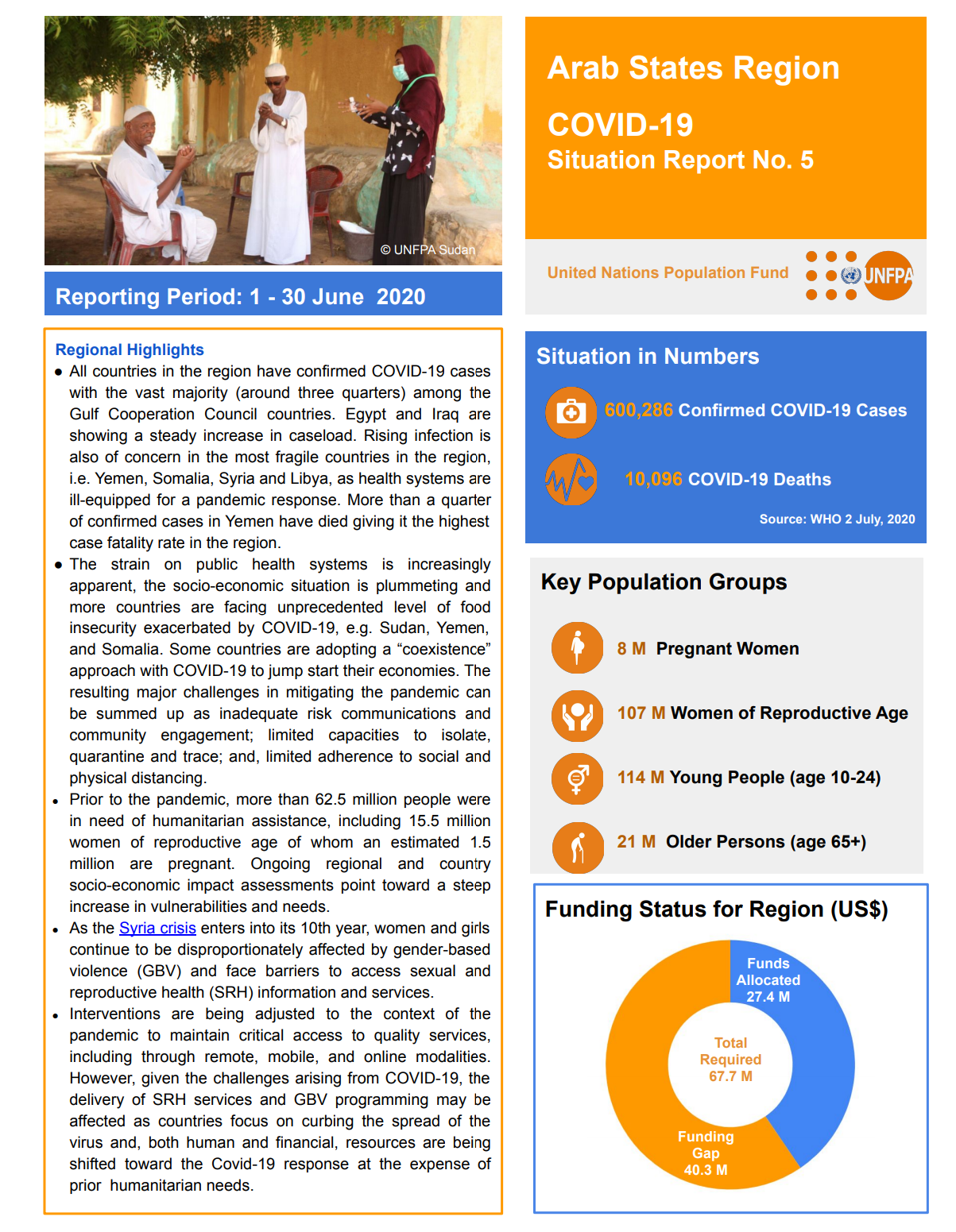
COVID-19 Situation Report No. 5 for UNFPA Arab States
All countries in the region have confirmed COVID-19 cases with the vast majority (around three quarters) among the Gulf Cooperation Council countries. Egypt and Iraq are showing a steady increase in caseload. Rising infection is also of concern in the most fragile countries in the region, i.e. Yemen, Somalia, Syria and Libya, as health systems are ill-equipped for a pandemic response. More than a quarter of confirmed cases in Yemen have died giving it the highest case fatality rate in the region.

Estimating the Cost of Child Marriage in the Arab Region
Child marriage is a violation of human rights and a form of gender-based violence (GBV) that results in numerous adverse outcomes for a child’s development. In the past 25 years, the Arab region has experienced a decline in child marriage, yet progress has slowed over the past decade. Since 2010-2011, there have been noted increases of child marriage among conflict-affected and displaced populations in the Arab region. The consequences of child marriage are numerous and profound. As well as impeding girls’ educational and economic opportunities, it increases their risk of being subjected to additional forms of GBV and exploitation. Young brides often lack decision-making power in their households regarding important issues such as their health, negotiating safe sex and contraception. Indeed, child marriage has many serious sexual and reproductive health consequences for both young girls and their children, including an increased likelihood of frequent and unplanned pregnancies, increased risk of maternal and infant morbidity and mortality, pregnancy complications, death during childbirth and increased risk of contracting HIV/STIs.

State of World Population 2020
Every day, hundreds of thousands of girls around the world are subjected to practices that harm them physically or psychologically, or both, with the full knowledge and consent of their families, friends and communities.
The practices reduce and limit their capacity to participate fully in society and to reach their full potential. The impact ripples throughout society and reinforces the very gender stereotypes and inequalities that gave rise to the harm in the first place.
Three widespread harmful practices are female genital mutilation, child marriage and son preference.

State of World Population Highlights 2020
Every day, hundreds of thousands of GIRLS around the world are harmed physically or psychologically, or both, with the full knowledge and consent of their families, friends and communities. The impact ripples throughout society, reinforcing gender stereotypes and inequalities. The scope of harmful practices is vast, but three in particular have been almost universally denounced as human rights violations yet remain stubbornly widespread: female genital mutilation, child marriage and son preference.
These practices cross borders and cultures. They vary in the specifics of their execution—a girl may have her genitals cut in infancy or adolescence, she may be married off to “protect” her from rape or as part of a trade, she may be erased before birth or
neglected to death after. But these practices are alike in origin; they are rooted in gender inequality and a desire to control female sexuality and reproduction. Though they inflict a devastating array of harms on individual women and girls, the harms inflicted on the world at large, and on future generations, may be greater still.
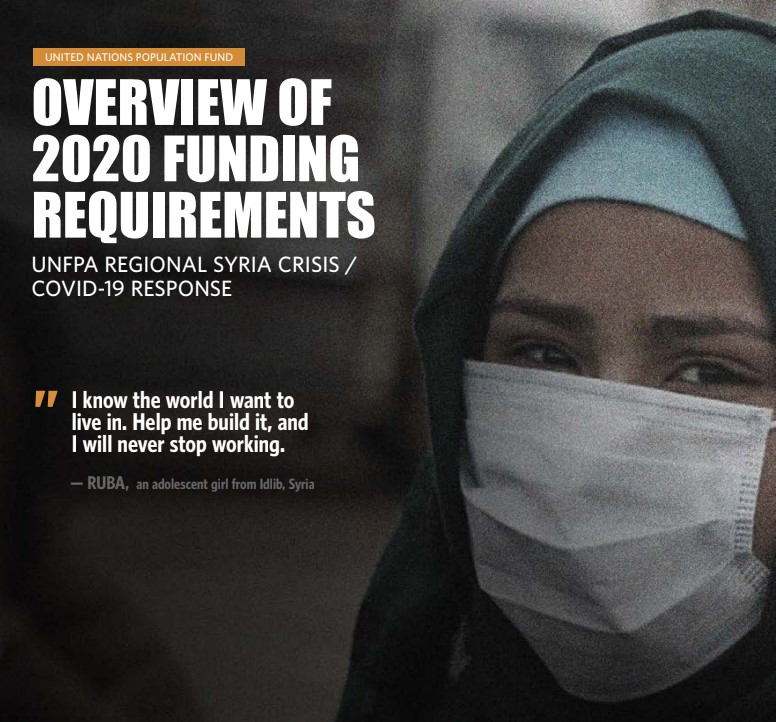
UNFPA Regional Syria Crisis / COVID-19 Response: Overview of 2020 Funding Requirements
The crisis in Syria has been globally recognised as one of the worst humanitarian crises of our time. As of 2020, more than 11.7 million people inside Syria are in need, while close to 5.7 million have taken refuge in neighbouring countries throughout the region. Since 2011, UNFPA has been responding to the needs of Syrian women and girls, delivering an integrated package of sexual and reproductive health (SRH) and gender-based violence (GBV) services that meet the continually evolving needs on the ground.
This funding overview provides a snapshot of UNFPA's needs during 2020, including those required to continue delivering life-saving SRH and GBV services as well as funds needed to support UNFPA's COVID-19 response within the context of the Syria crisis.